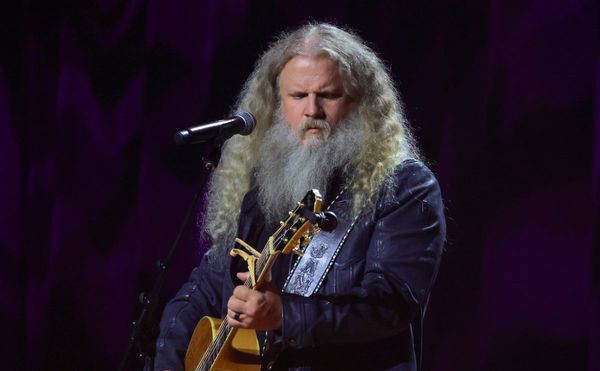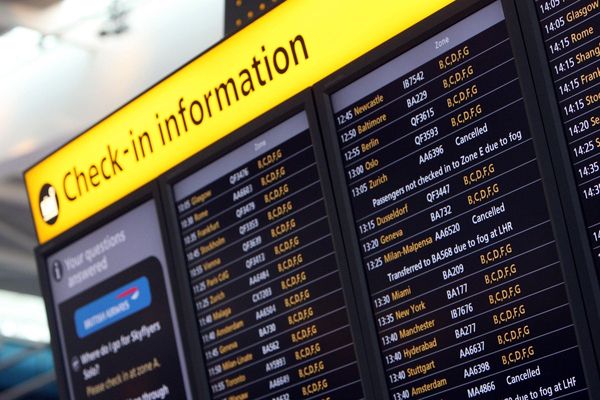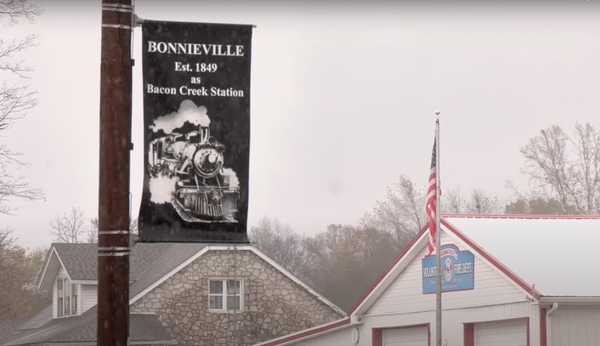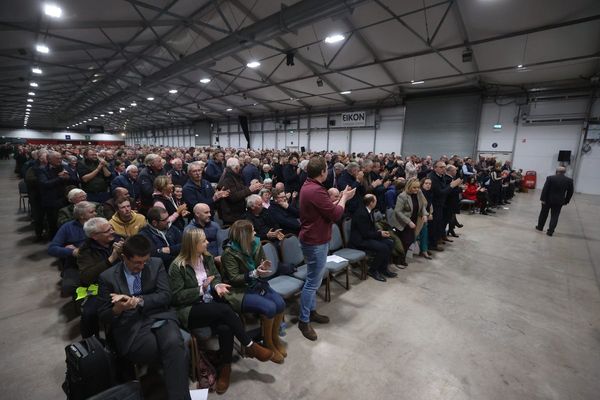
If the language used on the internet is a reliable indicator, we’re more psychologically enlightened than ever. We discuss attachment styles like the weather. We joke about our coping mechanisms. We project, or are projected on to. We shun “toxic” people. We catastrophise and ruminate. We diagnose, or are diagnosed: OCD, depression, anxiety, ADHD, narcissism. We make, break or struggle to “hold” boundaries. We practise self-care. We know how to spot gaslighting. We’re tuned into our emotional labour. We’re triggered. We’re processing our trauma. We’re doing the work.
The language of the therapy room has long permeated popular culture. Common terms like “repression”, “denial”, “slip of the tongue”, “hysteria” and “inner child” all lead back to Freud. But over the last decade or so, with the vast expansion of social media networks, a new, seemingly sophisticated language sits on modern society’s tongue. Some call it therapy-speak. Or psychobabble. But despite its prevalence, the language is divisive.
Last month, online discourse throbbed with disdain when Sarah Brady, the ex-partner of Jonah Hill, shared text messages he’d sent her about his “boundaries” (no “surfing with men”, no friendships with “women who are in unstable places” and no swimsuit selfies). Many argued that his self-satisfied language was a weaponising of therapy-speak; using “expert” terms to try to control her behaviour.
If we’re often online and are plugged into wellness, self-help or relationship worlds on social media, therapy-speak is our first language. Here, algorithms feed us from a bottomless well of content by coaches and other self-proclaimed experts who teach us how to cope with being triggered; how to identify a narcissist; how to “show up” in relationships; how to hold a boundary and so much more. With every scroll, a new tutorial in human psychology. But what are we actually learning?
“By virtue of being human beings, we’re masters at distancing ourselves from difficult aspects of emotional life,” says Dr Jonathan Shedler, a psychologist at the University of California, San Francisco. “One way we distance ourselves is through words. What we’ve got now is this kind of pop-psychology language of clichés, abstract concepts and turns of phrase that are so different from speaking from the heart.”
For Shedler, modern therapy-speak is “not actually a product of reflection and examination”. In psychotherapy, he says, “we always move from the general to the specific. People will say something general or abstract and a good therapist is always asking for examples. If a person says that they felt stressed, we might say, ‘OK, tell me more about that. How did you experience the stress?’ If a patient is using therapy-speak, the goal of the work has to be to move away from this to something more immediate and emotionally alive.”
Platforms such as YouTube, Instagram and TikTok pull in colossal viewing numbers on these abstract concepts. Search “gaslighting” on YouTube and the top result (“10 Examples of What Gaslighting Sounds Like”) has 3.3m views. On TikTok, the #narcissism hashtag has 3.8bn views. Search “triggered” on Instagram and a tidal wave of multimedia content appears. You can scroll for 10 minutes and still be fed lists, memes and vlogs. Even if only a small portion of viewers take the language they’re absorbing online into their offline conversations, we can still imagine how easily it seeps into public consciousness. Particularly among young people, the main demographic for platforms like TikTok.
We might argue that an increased awareness of psychological dynamics, and a growing ease for identifying and discussing mental health issues, are particularly good things for teenagers and young adults. The historical backdrop is that mental health was shrouded in stigma and taboo for so long. If young people can have a freer, more matter-of-fact understanding of mental health, it may lead to less suffering in silo. Maybe even a positive effect on generations to come. But the expansion of certain language worries some professionals who work with young people.

Kate teaches biology in a secondary school in Manchester, where she has worked for 15 years. She has been a form tutor for 10. In her experience, conversations she hears among teenagers – and the way issues brought to her are described – have changed dramatically in the last five years. “I hear words like ‘triggered’, ‘gaslighting’ and ‘narcissist’ so often now,” she says. “Young people are using these words to describe their fellow pupils and other teachers, when they feel hurt or singled out. I had to look up what gaslighting meant.”
She reflects empathically on how difficulties in friendships when you’re at school can “feel like the end of the world”. “You want to validate how they feel,” she says. “Because being a teenager is really hard. But sometimes it seems as if they’re wedded to words they’ve picked up on social media. They’re dismissing each other and, sometimes, struggling to take responsibility for their own behaviour because they have compelling words like ‘triggered’ that make their own feelings the most important thing, above all else.”
Kate wanted to be quoted under a pseudonym. She was worried that her reflections might be seen to be taking a coping strategy away from young people when “the world is stacked against them.” It makes sense.
Climate change weighs heavy on their minds. Media influence and gender norms continue to create a disparity between their lived reality and future aspirations. (Men are still portrayed as independent, emotionally stoic and in roles that signify strength; women as childcarers, home-keepers and care-workers. A young person’s real-life sense of themselves may not fit with the images they absorb, and may cause mental distress or limit a young person’s sense of potential.) The pandemic, social inequality, austerity and online harm have driven a huge rise in NHS mental health referrals – and the system is buckling. Thresholds for getting specialist help are so high that many young people are refused care, sometimes with fatal consequences. It is a curious phenomenon that, while statistics suggest young people’s mental health is declining, social media has provided a compelling language with which to navigate their lives.
But some therapists (including myself, and many I know) believe that the expressive nature of therapy-speak is, actually, not all that expressive. The language barely aligns with what therapy is; a singular relationship between the therapist and their client, with its own intimate context and idiosyncrasies.
Shedler focuses on the word “triggered”. “For some people, it’s very difficult to say, ‘I was angry’ or, ‘I was terrified’. So there’s already a layer of obfuscation about what their internal experience is. Something we try very hard not to do in therapy is locate the upsetting thing externally. If you leave the ‘I was triggered’ there, your internal experience is almost secondary. In meaningful therapy we try to reverse that. All our experiences take on personal meaning. The work of therapy is to explore those layers.”
The psychotherapists I have trained with, and been supervised by, use very little of the therapy-speak I see on social media. Theory and literature inform the work, but conversations are in much more plain English than you might think. This is what we try to invite in our clients: the freedom to speak plainly.
In my experience, some younger clients have brought in words like “triggering”, “gaslighting”, “narcissism” and some confident diagnoses of others’ “personality disorders”. Sometimes, it has seemed hard for them to name emotions like fear or anger. The influence over their language doesn’t just come from social media, but from reality shows like Love Island, Love is Blind and Married at First Sight. (I was struck at how often the term “gaslighting” was used in the last season of MAFS, a show that consumed me more than I’d care to admit.)
It can take a long time to get beneath the use of these terms – which may be described as a defence mechanism – and explore someone’s deeper, more vulnerable emotional experiences. This relies on building a safe, trusting relationship. But often we don’t have time.
For so many people, long-term therapy is unaffordable. In the UK, if you can’t afford private therapy, mental health support on the NHS is often dictated by a postcode lottery and limited to six-to-eight sessions of CBT. Short-term work can be effective and meaningful for some people. But in-depth therapy is often a luxury. This might explain why the confessional nature of therapy-speak annoys some of us. It might seem imperious; a white, middle-class gate-keeping of suffering from people who, in relative terms, suffer the least.

I’m reminded of a Twitter thread from 2019 on which someone offered a template for responding to a friend in distress when you don’t feel able to help. It said: “Hey! I’m so glad you reached out. I’m actually at capacity/helping someone else who’s in crisis/dealing with some personal stuff right now, and I don’t think I can hold appropriate space for you. Could we connect [later date or time] instead/Do you have someone else you could reach out to?” The vocabulary was widely made fun of, with many people identifying how hard the person was working to avoid a friend in distress.
For Shedler, the kind of therapy-speak we’re saturated with online is particularly destructive: “It alienates us from our internal experience while pretending to do the opposite,” he says. We might say it’s helping people to become so much more psychologically minded. But he feels “the reality is it’s actually doing the reverse.” It’s probably true that there’s little room for self-awareness, or taking responsibility, if we’re quick to tell people they’re gaslighting us by expressing something we don’t agree with. (Incidentally, the term comes from a film in the 1940s, not psychology literature.) Or if we confuse conflict with “abuse”.
I have shifted positions on the casual use of therapy-speak many times. I still don’t know exactly what I think, other than that I think about it a lot. I have worked in a charity providing therapy to survivors of domestic and sexual abuse. Many of my clients have struggled with the effects of austerity and navigating the benefits system, while living with chronic health issues that compound their emotional distress. As a result, I have bristled at the term “trauma” being bandied around. I have balked at pithy Instagram memes about drinking, after witnessing the devastation of addiction. I’ve also observed that people are still more likely to minimise their distress than embellish it.
I have struggled seeing “triggers” (a concept derived from the treatment of PTSD) so widely appropriated, and the increased cultural understanding that we should avoid being triggered at all costs. This is in conflict with the most robustly evidenced approach for trauma therapy: to slowly and carefully help someone tolerate their discomfort by increasing their exposure to their feelings, both in the room with a therapist, and in the outside world.
However, writing all this down also makes me think, what right do I have to assume passport control for certain words? The language of healing, or surviving, will look different for everyone. It’s complex.
Social media undoubtedly plays a role in flattening human emotions into neat, shareable terms. We’re encouraged to pathologise friends, family or lovers with vocabulary that strips away nuance and context. This probably does get in the way of the “speaking from the heart” that Shedler speaks of. It might help us feel more powerful when we’re hurt or afraid. But what happens to the pain and fear once we’ve labelled someone? Where does it go?
I’m not sure where I sit with some of the other language. If someone says they were traumatised by the pandemic – by isolation, caring for dying people, loss of loved ones, financial ruin, long Covid – is that not valid? If a young person is struggling because their parents can barely afford to feed them, or with their identity in a world that doesn’t seem hospitable to who they might want to be, might appropriating therapy-speak help them feel like they have more agency?
A good experience of therapy can help someone flourish. It’s also an experience many of us might struggle to have. But notions of the therapy world continue to be positioned as the “right” way of being; in ourselves, and with each other. Therapy-speak might be annoying, tiring and get in the way of authentic emotional expression. Perhaps even with damaging consequences. But something so pervasive requires a little more than suspicion.
Could the expansion of this language speak to a collective hunger for a framework that helps us talk about our existence in modern society? That is, trying to feel peaceful, purposeful and connected while many structural forces collide and make that existence feel harder and harder. There’s no clear solution, other than: make the world easier to live in. But a therapist might tell you that’s magical thinking.







